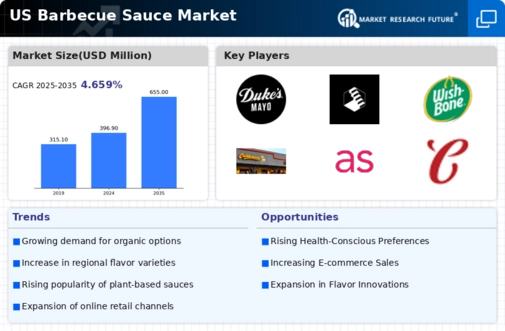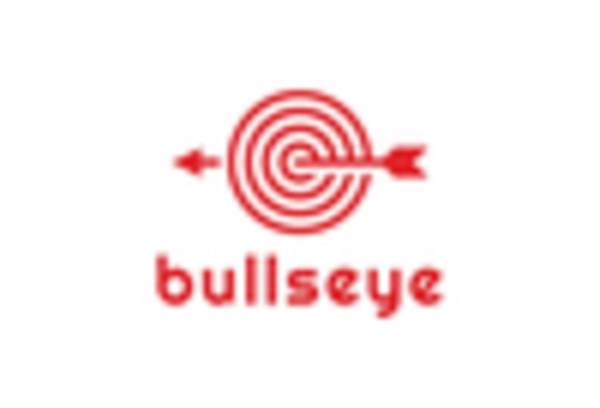Rising Popularity of Grilling
The barbecue sauce market experiences a notable boost due to the increasing popularity of grilling as a cooking method in the US. This trend is particularly pronounced during the summer months, where outdoor cooking becomes a favored pastime. According to recent data, approximately 70% of US households engage in grilling, which correlates with a heightened demand for barbecue sauces. The barbecue sauce market benefits from this cultural shift, as consumers seek diverse flavors to enhance their grilling experiences. The rise of grilling competitions and events further fuels interest, leading to innovative sauce formulations that cater to adventurous palates. As grilling becomes more mainstream, the barbecue sauce market is likely to see sustained growth, driven by both traditional and novel flavor profiles that appeal to a wide range of consumers.
Increased Focus on Flavor Innovation
Flavor innovation stands as a critical driver in the barbecue sauce market. As consumers become more adventurous in their culinary choices, manufacturers are compelled to develop unique and bold flavors that differentiate their products. The barbecue sauce market witnesses a surge in sauces infused with exotic ingredients, such as chipotle, mango, and bourbon, appealing to a broader audience. Data indicates that specialty sauces account for nearly 30% of total sales in the market, reflecting a shift towards premium offerings. This trend not only enhances consumer engagement but also encourages brand loyalty as customers seek out distinctive flavors. The emphasis on flavor innovation is likely to continue, as brands strive to capture the attention of discerning consumers who prioritize taste and quality in their barbecue sauce selections.
Growing Demand for Organic Ingredients
The barbecue sauce market is increasingly influenced by the growing demand for organic and natural ingredients. As health-conscious consumers prioritize clean eating, they seek products that align with their values. The barbecue sauce market responds to this trend by offering organic options that are free from artificial preservatives and additives. Recent statistics reveal that organic food sales in the US have surged by over 10% annually, indicating a robust market for organic barbecue sauces. This shift not only caters to health-oriented consumers but also appeals to environmentally conscious individuals who prefer sustainably sourced ingredients. The integration of organic components into barbecue sauces is likely to enhance market growth, as brands that prioritize transparency and quality resonate with a significant segment of the consumer base.
Expansion of Retail Distribution Channels
The barbecue sauce market benefits from the expansion of retail distribution channels, which enhances product accessibility for consumers. Traditional grocery stores, specialty food shops, and online platforms are increasingly stocking a diverse range of barbecue sauces, catering to varying consumer preferences. Recent data suggests that e-commerce sales in the food sector have grown by approximately 15% in the past year, indicating a shift in shopping habits. The barbecue sauce market capitalizes on this trend by ensuring that products are readily available across multiple platforms, allowing consumers to explore and purchase their favorite sauces with ease. This expansion not only increases brand visibility but also fosters competition among manufacturers, driving innovation and quality improvements in the market.
Culinary Trends Influencing Consumer Choices
Culinary trends play a pivotal role in shaping consumer choices within the barbecue sauce market. As food culture evolves, consumers are increasingly influenced by trends such as fusion cuisine and international flavors. The barbecue sauce market adapts to these shifts by introducing sauces that reflect global culinary influences, such as Korean BBQ or Caribbean jerk flavors. This trend is supported by data indicating that nearly 40% of consumers express interest in trying new and diverse flavors. As food enthusiasts seek to replicate restaurant-quality dishes at home, the demand for unique barbecue sauces rises. This dynamic environment encourages brands to innovate and diversify their product offerings, ensuring they remain relevant in a competitive market.

















Leave a Comment